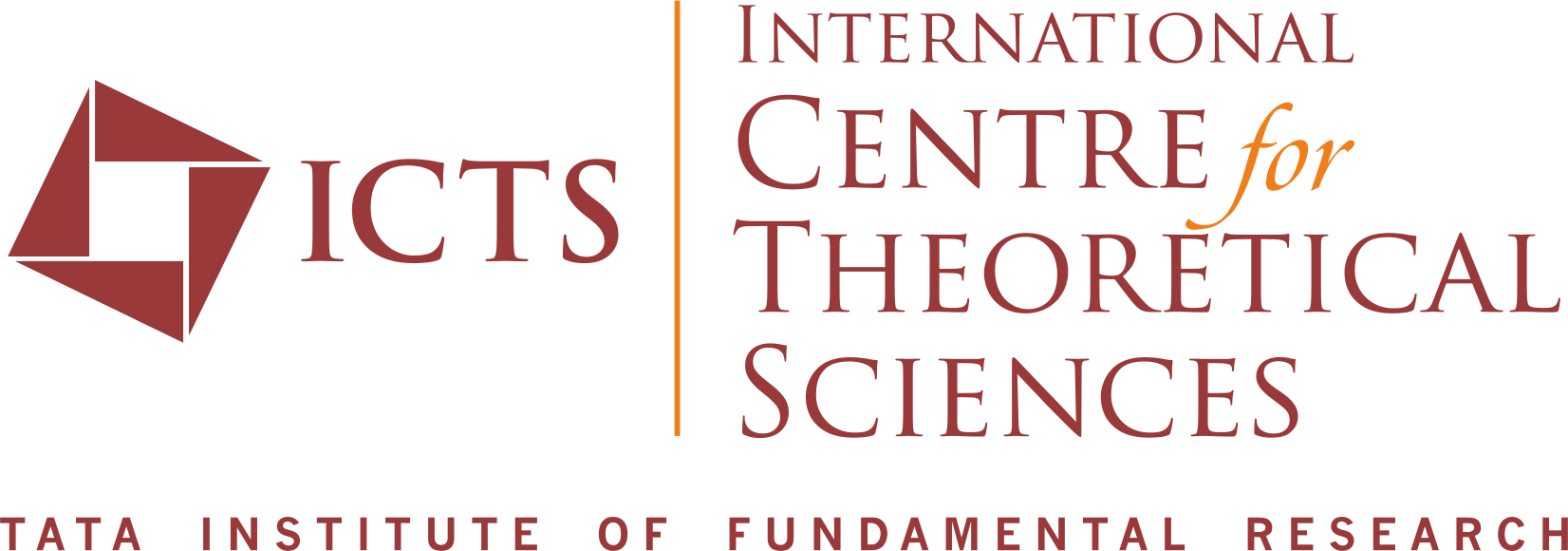Monday, 06 January 2025
An Introduction to Nonlinear Dynamics
In this class, we will cover basic ecological models on population growth dynamics and saturation, including logistic growth and the Allee effect (cooperative growth). We will see how these models can capture the dynamics of microbial populations, which in turn are convenient experimental models to test hypotheses from ecological theory.
The Generalized Lotka-Volterra Model for n Interacting Populations (Lecture 1)
TBA
Tuesday, 07 January 2025
TBA
This class is an introduction to the 2-species competitive Lotka-Volterra model. We will cover three canonical outcomes--coexistence, dominance and bistability-- for the pairwise competition between species. We will also use the model to predict co-culture's responses to different perturbations, and see how these predictions were experimentally verified in microcosms.
TBA
Wednesday, 08 January 2025
This session will be mostly practical. Within the framework of the 2-species LV model, we will use nullcline analysis to predict the outcome of competition in different situations. These include cases in which either or both competitors are subject to cooperative growth, which can lead to alternative stable states that emerge in (2-species) co-culture, but that are absent in any of the (1-species) monocultures.
TBA
TBA
TBA
Thursday, 09 January 2025
TBA
TBA
TBA
TBA
Friday, 10 January 2025
TBA
TBA
TBA
TBA
Monday, 13 January 2025
1. basics on RV (probability, moments, mgf, continuous RVs)
2. summing RVs and central limit theorem
3. sampling (binomial, poisson)
4. intro on stochastic processes
5. random walk
6. birth-death process (basics and exctintiion)
7. birth-death-migration process (stationary probability)
TBA
One important interdisciplinary approach of ecological systems is the "complexity" perspective, which is represented by many lectures in this school. This lecture covers complementary ideas about networks of species interactions, their structures, and the use of randomness to understand their general features.
TBA
Tuesday, 14 January 2025
1. Phenomenology of community variability (intro, SAD)
2. Phenomenology in microbial communities (minimal patterns)
3. demographic stochasicity and migrations (birth-death-migration)
4. flavours of neutral theory (assumption, predictions)
5. continuous limit of birth-death-migration process (stationary and dynamic solution)
6. when NT works and fails
I discuss the role of non-linear feedback processes in driving species coexistence and diversity.
Another important interdisciplinary approach in ecology is the search for large-scale or even "universal" empirical patterns with simple explanations, such as distribution of energy and biomass across the world and across various types of organisms (plants, herbivores, carnivores...). This lecture will present some insights and limits of simple deterministic patterns constrained by biological mechanisms.
TBA
Wednesday, 15 January 2025
TBA
Microbial ecosystems frequently exhibit multiple alternative stable states under identical environmental conditions, separated by abrupt regime shifts. These shifts complicate the understanding, manipulation, and control of such systems, with significant implications for natural, industrial, and health-related contexts. In this talk, I present a unified framework combining insights from nutrient competition and phage-bacteria interactions to explore these dynamics.
First, I will discuss models that predict stable states in microbial ecosystems based on different resource utilization strategies. The first model [1] describes communities of diauxically growing microbes, where species dynamically switch between nutrient preferences depending on environmental availability. In contrast, the second model [2] focuses on specialist species, each limited by two essential nutrients, such as carbon and nitrogen, represented by multiple metabolites. Both models draw inspiration from the stable marriage problem in economics, developed by Gale and Shapley in the 1960s and awarded the Nobel Prize in Economics in 2012. Using ranked tables of species' competitive abilities for nutrients, these models identify all feasible stable states and the specific environmental conditions—characterized by nutrient fluxes—where they occur. This framework reveals a complex network of transitions between stable states and highlights perturbations that induce regime shifts versus those with transient effects.
Next, I address alternative stable states in phage-bacteria systems, building on the findings in [3]. These systems demonstrate how bacterial growth rates, phage burst sizes, and defense mechanisms like CRISPR and abortive infection drive regime shifts. For example, a fast-growing bacterium may exclude slow-growing one via nutrient depletion, but phage predation can invert this dynamic, favoring the slower-growing bacterium.
References:
[1] Goyal A, Dubinkina V, Maslov S. Multiple stable states in microbial communities explained by the stable marriage problem. ISME J. 2018;12: 2823–2834. https://doi.org/10.1038/s41396-018-0222-x
[2] Dubinkina V, Fridman Y, Pandey PP, Maslov S. Multistability and regime shifts in microbial communities explained by competition for essential nutrients. eLife. 2019;8:e49720. https://doi.org/10.7554/eLife.49720
[3] Maslov S, Sneppen K. Regime shifts in a phage-bacterium ecosystem and strategies for its control. mSystems. 2019;4:e00470-19. https://doi.org/10.1128/mSystems.00470-19
Ecology is a very fragmented field with a variety of scientific questions and cultures. Toward the end of the school, I will present a personal perspective on what red threads run through the whole field and when the connection can benefit or not from being made in a mathematical language.
Thursday, 16 January 2025
TBA
I discuss how the interplay between non-linearity and spatial variation allows species coexistence in variable environments.
Microbial communities assemble and thrive in strongly fluctuating boom-and-bust environments by adopting distinct metabolic strategies to consume resources. While much attention has been given to understanding these strategies in isolated species, their ecological implications in complex communities remain poorly understood. Here, we combine theoretical and computational frameworks to investigate the assembly and ecological properties of microbial communities with diauxic (sequential) and co-utilization strategies.
We show that diauxic microbial communities, where species sequentially utilize resources, spontaneously develop complementary resource preferences during assembly. This complementarity arises because sequential utilization disproportionately relies on the top-choice resource for growth, leading to intuitive ecological partitioning. A geometric approach to analyzing these serially diluted communities further explains emergent patterns, such as the absence of species preferring suboptimal resources for growth.
Comparing sequential and co-utilization strategies, we find that sequential utilizers dominate in species-rich, high-competition communities, leveraging their resilience to fluctuating resource ratios. Their ecological advantage lies in growth rate distributions characterized by wider upper tails, despite lower averages, enabling efficient niche packing and structural stability. Conversely, co-utilizers thrive in low-diversity communities, benefiting from consistently higher average growth rates.
Our work provides a unified explanation for the coexistence of sequential and co-utilizing strategies in natural ecosystems and predicts patterns of community assembly shaped by metabolic strategies. These findings offer testable hypotheses for understanding the dynamics of microbial communities in natural and synthetic environments.
TBA
Friday, 17 January 2025
I discuss how the interplay between non-linearity and temporal variation allows species coexistence.
TBA
Achieving precise control over microbial community composition is critical for applications ranging from bioremediation to human health but remains challenging due to the complexity of microbial interactions and resource variability. This work presents a framework for the bottom-up engineering of microbial communities by leveraging resource dynamics and temporal niches in fluctuating environments.
This approach assembles and maintains microbial "dream teams" - small, defined communities with desired properties—using serial dilution experiments. By treating resource concentrations as dynamic "control knobs," it enables stable coexistence and precise tuning of species abundances. Theoretical models, informed by experimental data from natural and synthetic microcosms, incorporate ecological and metabolic parameters, including species-specific time lags and dilution factors, to identify resource combinations that maximize community stability and diversity.
I will also describe how to engineer a multi-cycle resource strategy to overcome resource limitations and dramatically increase microbial diversity. By systematically varying resource ratios across growth-dilution cycles, this strategy creates additional temporal niches that allow for the coexistence of a larger number of species than traditional methods. Numerical simulations demonstrate that multi-cycle strategies significantly enhance species diversity, approaching the theoretical upper bound of 2^n-1 species coexisting on n resources.

